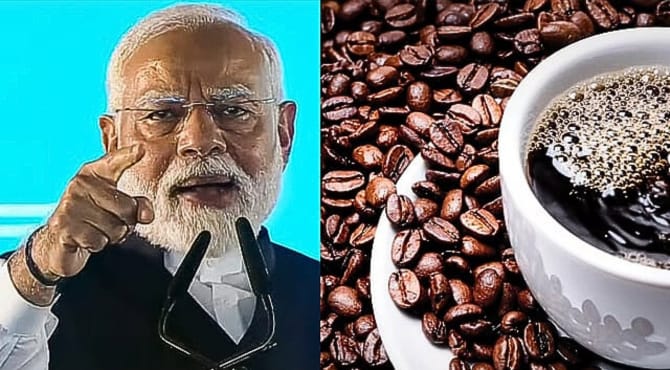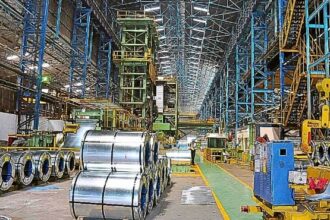Indian coffee of different varieties grown in diverse regions was the theme of a “Mann Ki Baat” address by Prime Minister Narendra Modi. Besides the traditional areas like Karnataka (Chikmagalur, Coorg, Hassan), Tamil Nadu, and Kerala, he talked about the North-East as the new frontier of coffee cultivation.
Prime Minister also talked about the revolutionary effect of coffee plantation on the living of the people, especially tribal farmers and women, by giving the example of Koraput coffee which not only revived the degraded forest but also ensured the income of the people. The Ministry of Commerce and Industry added that Indian coffee is a highly export-oriented product, as 70% of the production is going to more than 120 countries, resulting in a $1.80 billion revenue in 2024-25.
Indian coffee exports have been on a dramatic rise over the last three years, in fact, the value of exports has gone up from $1.29 billion in 2023-24 to $1.81 billion in 2024-25. The increase is more than 40%, and it is solely due to the increased global demand for both raw and value-added coffee products like roasted and instant coffee. India is the seventh-largest coffee producer, and the coffee plantations cover 4.9 lakh hectares while the production is 3.63 lakh metric tonnes.
Demand for the Indian coffee in the international markets is primarily due to the introduction of specialty tribal coffees like Koraput and Araku, which have started to command premium prices. These coffees attract highly selective international markets that put quality, sustainability, and traceability at the forefront.
The Coffee Board’s intervention in the form of support to farmers and new market linkages has not only raised the farmer’s income but also their living standards, especially in the tribal communities. In India, the culture of coffee consumption has grown significantly in the last 4-5 years. Average coffee consumption increased step by step from 1,180 thousand 60-kg bags in 2020 to roughly 1,235 thousand bags in 2022.
The change in consumer behaviour, caused mainly by millennials and GenZ, has made the coffee consumption gradually comparable with the traditionally dominant tea consumption. The demographic change combined with the advent of specialty coffee chains like Blue Tokai, Third Wave Coffee, and the extension of internationally recognised brands such as Costa Coffee and Starbucks is driving a dynamic coffee market growth that is expected to continue for the next 10 years at a CAGR of around 7.5%.Merchants and startups in the Indian coffee industry have created a culture around specialty coffee focusing on domestic bean sourcing and the generation of higher consumer awareness.
Specialty coffee brands in India have attracted a substantial amount of funding from global investors such as Verlinvest, who sees India becoming not only a major coffee-consuming country but also a hub for coffee exports. In addition to ready-to-drink coffee beverages and urban café culture, the Indian coffee market has deepened in terms of variety and has more potential consumers to target.
Beyond economic metrics, the coffee sector has delivered significant environmental benefits. Koraput coffee has helped restore degraded forest land, reduced soil erosion, and provided tribal farmers with steady cash income in place of subsistence farming. This sustainable approach aligns with global trends favoring environmentally responsible sourcing, further enhancing Indian coffee’s international appeal.
In conclusion, the points of Prime Minister Modi about Indian coffee going global are supported by solid facts: the rapidly growing and diversifying coffee farming landscape, robust export performance, changing domestic consumption pattern, and the rise of new premium coffee brands. With the backing of government schemes, eco-friendly farming methods, and rising foreign demand, Indian coffee is set to realise further market penetration, higher farmer incomes, and improved global standing over the next ten years.









